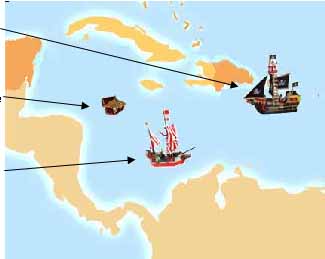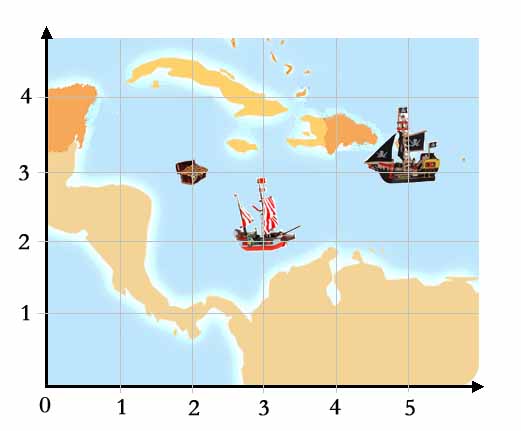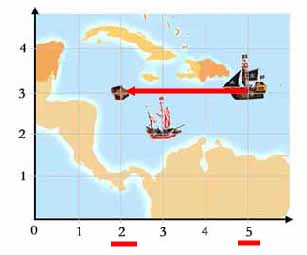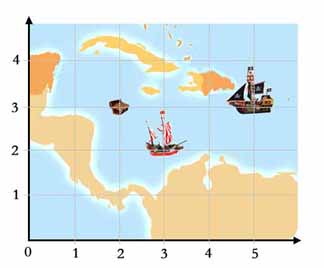
 |
|
|
|
The Coordinate PlaneTo simplify the coordinate plane, take a look at the map below. There are three very important images we need to identify.
The general purpose of a coordinate plane is to help us easily identify an object on a map. in this case, the two ships and the treasure chest. Take a look at the update map with the lines drawn in. The lines form a grid - it looks like a piece of graph paper was placed on top of our map.
The best way to use these lines is to think of them as roads that you drive on. The distance between each line is known as one unit - units can be 1 inch, 1 foot, 1 mile, 1 centimeter, or any other means of measurement. How many units do we have to travel from the Black Pearl to the treasure chest. Let's take a look.
Notice the red lines drawn into the map. The Black Pearl starts underneath the #5 line and then travels to the treasure chest under the #2 line. How far did it travel? In what direction did it go?
Do you see how this is much easier to determine distance (and location) once the grid is draw in? This grid, with the two black arrows and faint grey lines, is what is known as the coordinate plane. It is also referred to as the Cartesian Coordinate System (learn more about Rene Descartes).
Return to more free algebra help, or return to the GradeA homepage.
|
| . | ||
| Home │ Site Search │ Math Help Blog │ Help Keep GradeA Free | |
Written by Team GradeAmathhelp.com, all rights reserved. | ||



